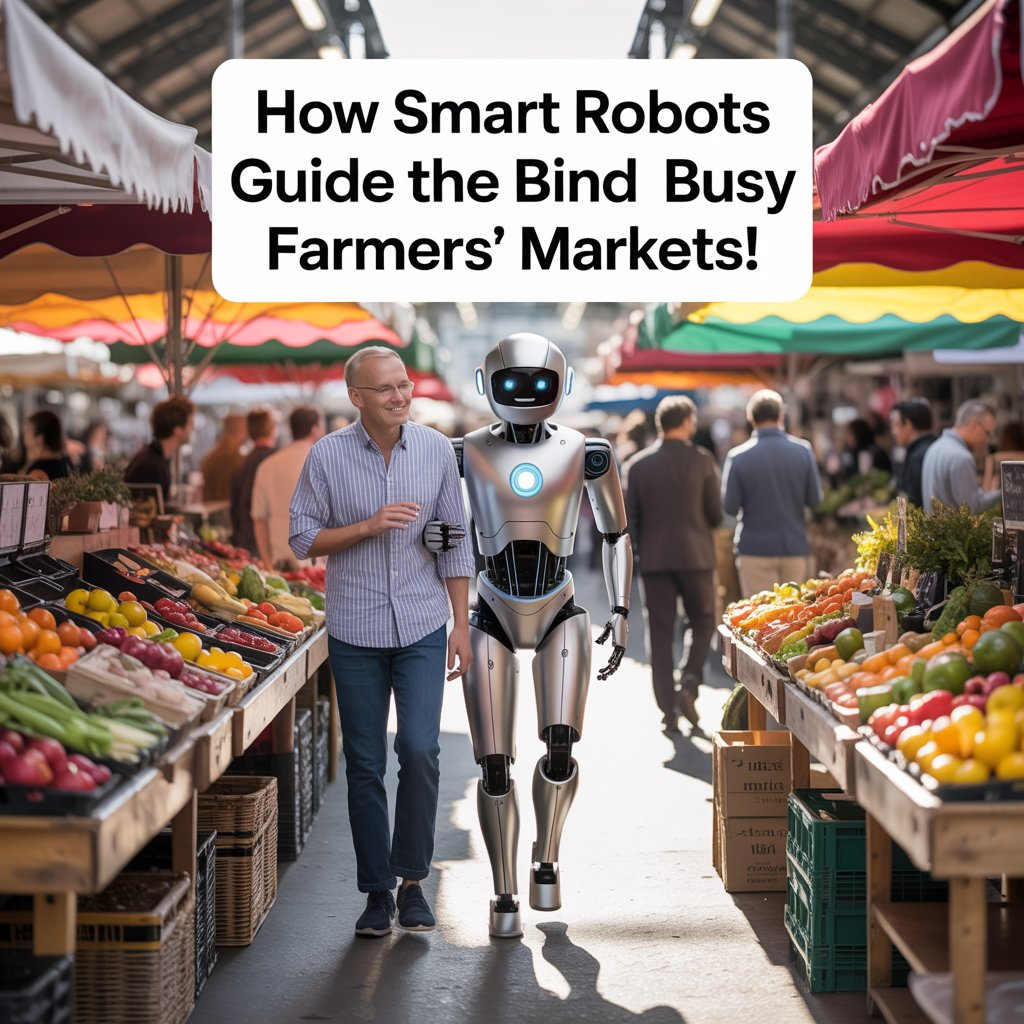How Smart Robots Guide the Blind in Busy Farmers’ Markets!
1. Advanced Navigation Systems
Smart robots are equipped with GPS, LiDAR (Light Detection and Ranging), and computer vision to create real-time maps of their surroundings. They can identify pathways, avoid obstacles, and adjust to dynamic conditions like moving crowds or temporary vendor setups.
2. Obstacle Detection and Avoidance
Using ultrasonic sensors and cameras, the robots can detect objects like tables, people, carts, or even pets. They automatically reroute to avoid collisions, providing a safe and smooth experience for the user.
3. Voice Interaction and Communication
These robots interact with users through voice commands. A blind person can ask for specific directions like “take me to the fruit stall” or “where is the restroom?” The robot responds with clear, spoken instructions and guides the user accordingly.
4. Vendor and Product Recognition
Some smart robots are integrated with databases and AI image recognition. They can recognize vendor signs or specific product types (e.g., tomatoes or handmade soap), helping users find exactly what they’re looking for with minimal assistance.
5. Real-time Environmental Feedback
The robots give continuous audio updates to the user, such as “steps ahead,” “turn left in 5 meters,” or “you are approaching a crowd.” This keeps the user oriented and aware of their environment, even in loud, chaotic settings.
6. Connectivity and Assistance Features
Many of these robots are connected to cloud services and mobile apps. Caregivers or family members can track the user's location or send instructions remotely. Some models even offer emergency contact features if help is needed.
Benefits:
-
Independence: Users can shop without needing a human guide.
-
Safety: Real-time obstacle detection prevents accidents.
-
Accessibility: Makes inclusive public spaces truly usable by the visually impaired.
-
Confidence: Empowers users to explore and interact in social environments.





Comments
Post a Comment